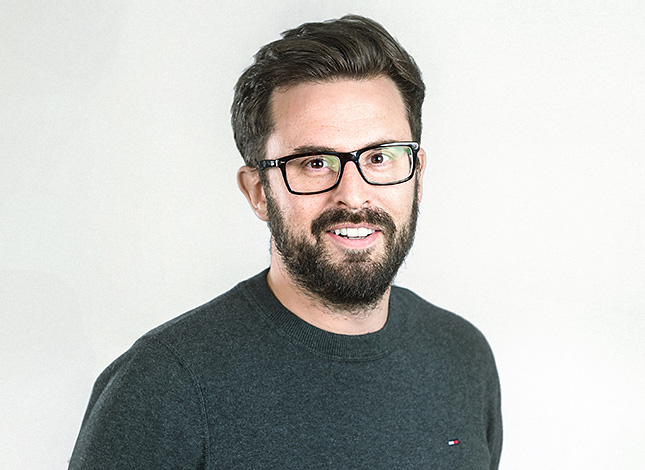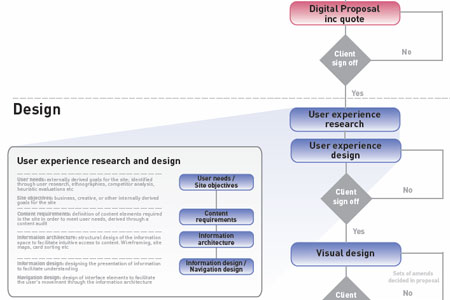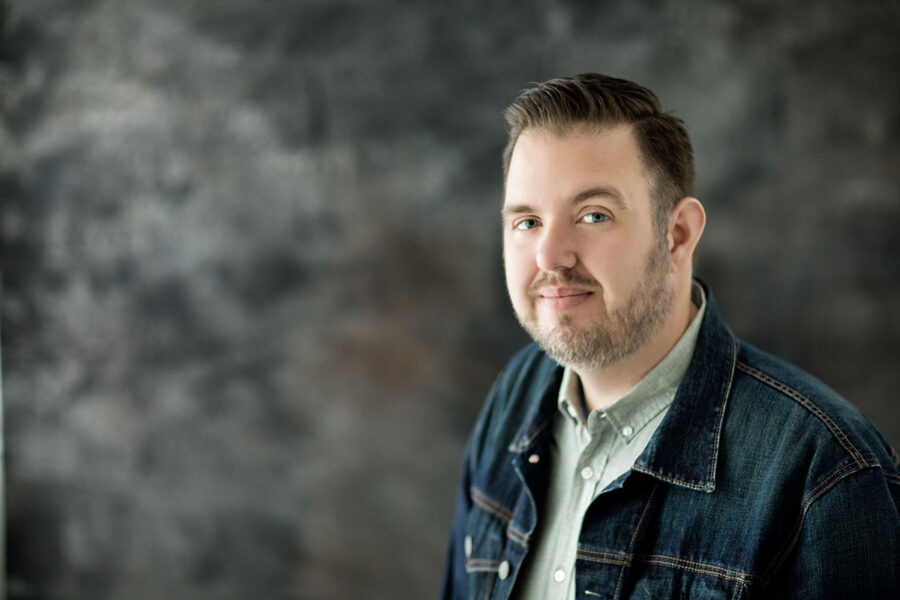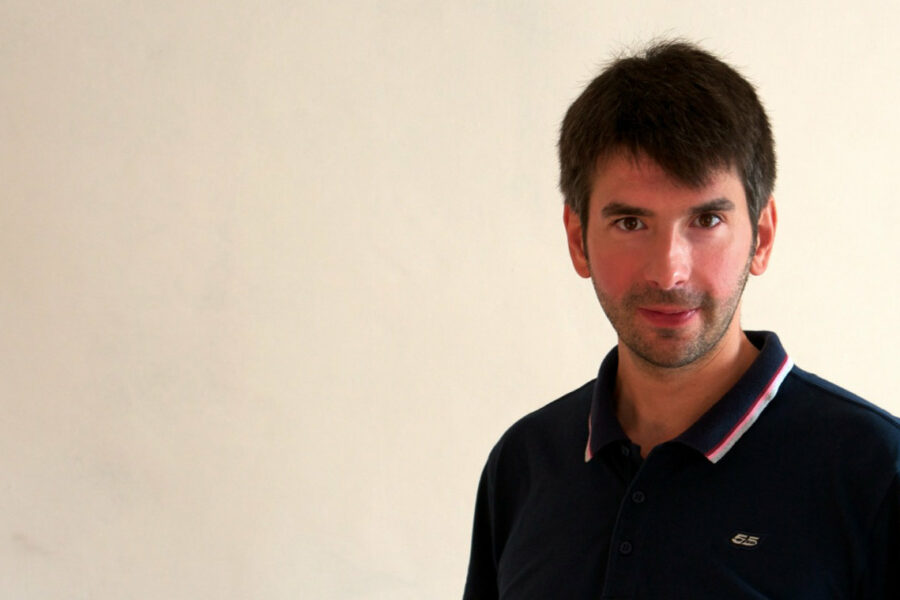Sam Evans works as Head of Digital at Bite CP. As well as being addicted to Crew Clothing, he can also be found regularly posting on his site Good Evans. Follow Sam on Twitter.
The Day Job
Tell me a little bit about the company you work for
I work for Bite CP, a top 100 design agency. We have four departments (design, digital, and PR and events) giving us the ability to offer a wide range of services to our clients. We work for clients such as John Lewis, ASDA Living, Samsung, Hitachi and TfL. Within Digital we have implemented a strong User-centered Design (UCD) process that enables us to deliver successful work.
What is the ratio of digital project managers to production staff at your company?
We have four people on the Digital team. Pete Williams and Tom Beynon, both developers, myself, and Rebecca who is the Digital Project Manager, plus all the designers – so 1 in 8.
Do you use any particular project management methodologies? If so, why? If not, why?
We have looked into lots of methodologies. Agile, Prince and Waterfall etc. – none ever suited. We are not a big enough team for Agile, Prince is just far too detailed a process and required unnecessary work and the Waterfall method is just too basic.
Take a look at of our process. It has evolved slightly since this was done, however, experience has taught us that keeping things simple is always the best policy.
Really and truly the process depends on the project.
What online or offline tools do you tend to use for digital project management?
For online collaboration we use Basecamp. For scheduling we have an internal system called Synergist that is a basic ERP but targeted at design agencies. For sitemaps we use Mindjet Manager and for wireframing we’ve been using Flarebuilder, but are switching to Axure (as it’s lovely).
How on earth did you end up managing digital projects? Few people start out with this aim. Tell me how you wound up being a full-time punch bag?
The projects are managed by our Digital Project Manager, Rebecca, but I oversee them all.
I did a Multimedia design degree at Southampton Solent University and was geeky enough to get a first :) I went into a web design/developer role at a car audio company. However, it became pretty random as they wanted me to do event management and other marketing based jobs which I wasn’t at all that interested in at the time so I moved on to Bite CP.
I have been here for four years now and it has evolved massively. I believe we are at position 66 in the Design Week Top 100 agency list – we have amazing clients and do some lovely work.
When I joined I was the only person in Digital and we’ve expanded our knowledge base and capability massively in that time.
For nearly all of that time we’ve had a Digital Project Manager as the scale and complexity of the projects we undertake require constant attention.
Do you just manage digital projects or is your role varied? If so, what other roles do you perform?
As well as overseeing the digital projects, I also undertake design and development work. As I mentioned, I was the only digital team member so have needed to become skilled in other areas too such as video editing and 3D.
It’s helpful as it allows me to view projects heuristically and it usually allows us to take the right approach first time.
What type of digital projects do you typically work on?
UCD projects for many different types of clients. From local restaurants like Cloche Hat, to big government agencies like BikeSafe London.
How many digital projects are you currently managing? What’s the most you’ve ever managed at any one time?
Currently 3 new builds, maintenance contracts for 12 and we have managed up to 5-6 new builds at a time.
What percentage of a digital project’s total budgeted hours would you typically spend on project management?
We don’t currently charge for Digital Project Management work, which is quite a hot topic of discussion in the industry. It’s important to stay competitive though.
I would say 35% of time on a job is project management based.
What digital projects are you working on right now, and what digital project are you most proud of to date?
We are currently working on a new build for a media agency, creating CMS to allow London School Travel Advisors to collaborate online and doing some video work for Oracle. Some work that stands out for me web wise is the John Lewis Brand Toolkit and BikeSafe London.
Describe a typical day in the life of your role managing digital projects.
Organising the schedule, briefing the team, dealing with account handler requests, managing budgets, taking client briefs, pitch work etc.
How would you describe your managerial style?
Relaxed, I don’t like hierarchy and we work really well as a team.
What are the common things that crop up on a daily basis that destroy your planned activities for that day?
Site amends that need to be fixed immediately and others not being as organised with their timings as they should be.
How do you keep organised personally, given the hectic life that comes with managing digital projects?
In the office we use Synergist to keep the entire office running smoothly. It’s pretty good on the whole and the schedule runs as a part of that.
Personally Synergist manages mine and the rest of the team’s day-to-day workload through prioritisation. As with many agencies though, it changes frequently as customer demands do. So as a result, the real root of managing time is to help manage the time of your clients and their expectations.
Personally I use Things on my Mac and iPhone for non scheduled work that needs to be done i.e. implementing more processes where required, housekeeping reminders etc.
The Projects
At what point do you typically get involved with a digital project you are to manage? Pre-sales and estimating or only post-sale?
Pre-sales. Even in the tender process!
What technique do you use to estimate digital projects? Do you use different ones for small and large projects?
We just get as granular as possible. Work out time required as a result and try and build in contingency where possible! Experience also plays a massive part.
How do you handle unrealistic digital project budgets and schedules?
We will advise clients that what they want for the money isn’t possible and try and give them an alternative solution for their money. We always try and be pro-active and supportive!
How does your company approach scheduling all the work currently in the pipeline?
Our Digital Project Manager Rebecca organises the Digital team schedule, but Account handlers organise the designers. It all gets scheduled into Synergist and then managed by the Operations Director.
You receive a new digital project to manage, what are the first steps you’ll take?
We supply a briefing sheet followed by a stakeholder interview.
Do you manage all aspects of digital projects, like design, front-end and back-end development, or do department leads manage production based on requirements you capture?
Yes. Our Digital Project Manager oversees the entire process. There are different stages of creative and technical sign off throughout.
For example, a design never leaves the building until the Creative Director has signed it off which would fallback to Head of Design in his absence.
Technically a site would be tested by a developer, then signed off by the Digital Project Manager, Account Handler and myself, along with another post development creative sign off.
What deliverables do you personally produce on a digital project? Sitemaps, wireframes, functional specifications? Or are these produced by someone else? If so, who?
Sitemaps, wireframes and task flows are completed by the UX guys in the team, myself, and Pete Williams
What are all the things that will be defined and approved before design or development begins on one of your digital projects?
We will complete a Terms of Refrence document (TOR) and do as much UX work as possible before visual design starts.
Bite CP’s TOR usually consists of the following sections and is heavily influenced by Russ Unger and his work he did for his book A Project Guide to UX Design.
- Revision History
- Project Overview
- Roles and Responsibilities
- Scope of Work
- Out of Scope
- Assumptions
- Requirements
- Risks
- Deliverables
- Milestones
- Project Pricing
- Terms and Conditions
- Additional Costs and Fees
- Acknowledgement and Sign-off
- Appendix
How do you tackle the art of monitoring digital project budgets versus progress?
It’s a built in facility within Synergist. At the end of the day web designers and developers add their time into the system and it will report percentage style where you are with regards to budget versus progress.
How do you manage the inevitable scope creep on digital projects?
By doing a TOR that is signed off at the beginning of a project we cover our backs. Any scope creep is therefore billed to the client and the TOR amended and signed off again.
What advice would you give for managing difficult clients?
Be as helpful as possible and offer as much advice to them as possible. After all, we are the experts.
How do you ensure past mistakes on digital projects never happen again?
We do post-project evaluations where we produce a lessons learnt document – any changes to the systems are then made.
The Big Questions
What websites, blogs and podcasts are you currently using regularly for inspiration?
Inspirationti.me is a cool site, we try and listen to Boagworld podcast in the studio too. A lot of our inspiration comes from regular conversation with industry peers on Twitter!
What are the biggest differences between managing website projects and web application projects?
Functional specifications, a must for web applications.
What do you think are the key personality attributes required to be a good digital project manager?
Stern, helpful, knowledgeable and obviously organised.
What are the biggest common misconceptions about digital project management?
They know everything about Digital, even down to “how to code”.
What, in your opinion, is the hardest part of digital project management?
The unexpected
In three words, how would you describe digital project management?
Challenging, demanding and mental.









Interesting interview sam. Thank you